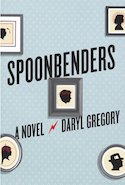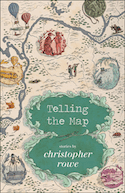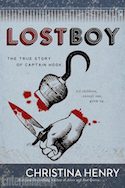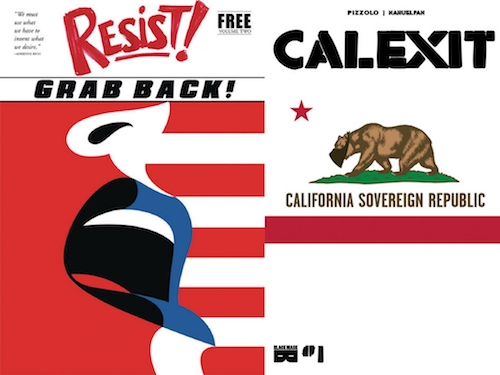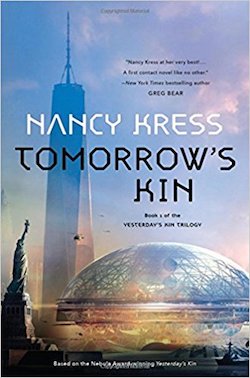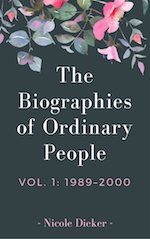Faithful readers of the site have seen Dawn McCarra Bass's byline for almost a year now. But what readers may not know is that in the last few months, her role at the site has expanded: she's now an associate editor, and she's accepting and editing freelance pieces for the site. I talked with Dawn about what kind of pitches she's looking for, why she's interested in working with the Seattle Review of Books, and what she likes to see in reviews. As always, if you'd like to pitch us, or talk about sponsorships, or share your feedback on the site, you can reach us through the contact form on our About page.
Hello! Our readers know you as the author of our Sunday Post column, but they may not be aware that you’re taking on a much bigger role behind the scenes. First of all, how did you come to work with the Seattle Review of Books?
Well, Paul, there was an 18-month hunger strike that I look forward to ending any day now …
Chronologically: I took a class on writing book reviews at Hugo House, taught by the site’s co-founders; I stayed in occasional touch; and eventually I ran into Martin McClellan at Short Run, where he made the mistake of mentioning that the two of you could use more hands on the site. It took me about five hours to go home and pitch him on letting me help. Maybe less.
I have voracious interest in books and in how people interact with them. And I read, a lot. No, really: a lot. Books, and writing about books. So the Seattle Review of Books was kind of catnip. The commitment to a different way of thinking about reviewing, and to creating something unique to Seattle; and the personality of the site — smart, passionate, geeky, fearless — I would have continued the hunger strike much longer if necessary.
I hope that first slice of pizza was magnificent. What’s your expanded role with the site, and how long have you been doing it?
Uh oh. What if none of us knows?
I like to be busy, and I don’t like to be bored, so I’ve got a few things on my plate.
The most important one (to me) is managing incoming pitches, helping writers revise their reviews and get them ready for the site, and expanding the editorial calendar — looking farther forward, and bringing greater diversity of all kinds as we increase the number of reviews (and interviews and columns) published every month.
So, really two things: putting some muscle behind you and Martin, so you can see more of the work you’re interested in on the site — and starting to expand the already strong editorial vision in new directions.
But I’m getting to know the site’s sponsors, too, which is a huge pleasure — what an awesome group of people — and likely will continue to be a jack-of-many-trades when needed.
What do you look for in pitches?
Do you mean in the way the pitch is put together? Or what makes for a successful pitch?
There’s a lot of practical stuff that goes into the first — we have a detailed description of how to successfully pitch the site, and it’s totally fine to follow that advice closely. You do not have to prove your worth by reinventing the pitch wheel.
Tell me why the book is interesting, and especially why it’s interesting for the Seattle Review of Books; tell me why your angle is interesting; tell me why you’re the person to write it. I’m a pretty sympathetic reader most days, but I’m always grateful if you make it easy to figure out why the review you’re pitching is going to be great.
The second is fuzzy logic. I look for some spark that tells me the writer has a good reason to be writing about whatever they’re pitching — that they care about the book (love it or hate it!) and are invested in helping other people see what they see in it. That they have a voice and an opinion. If the pitch sounds pro forma, I have to assume the review will be as well.
You wrote one of the most soulful reviews we ever published, about Marie Kondo’s The Life-changing Magic of Tidying Up. There’s no question here, I just thought this would be a great moment to link to it, and make sure potential writers for us know that you know what it’s like to be them. Care to comment?
Arguable! There are a lot of great, heart-felt reviews on the site — about anger, about grief, about insight. The weekly Writing Prompt has soul in spades.
I wrote that piece for the class you and Martin taught at Hugo House, and I apologized for handing in something that wasn’t a book review. If you’re pitching the site, you’ve likely also read a lot of book reviews, and also have learned a lot of “rules” that we’d like you to break.
Among the more traditional reviews on the Seattle Review of Books are awesome rule-breakers like Ivan Schneider’s non-interview with David Shields and Doug Nufer’s — whatever this is.
Write what you want to say about the book. Don’t write what you think you should say.
Can you think of a piece that you’ve read lately that you wish the Seattle Review of Books had published?
That happens all the time; I’m a jealous sort of person. Most recently — Kate Lebo has an essay in the latest issue of Moss about going on the road for her first book tour through the lens (sort of) of Kerouac’s On the Road: great storytelling, lots of insider detail on Kerouac, thoughtful about writing, traveling, and the difference between the troubadour mythology and the real experience of road-tripping, especially if you’re a woman. It’s a lot longer and more personal than what we usually publish, but in spirit — yeah. I’m bitter. Except you can’t be bitter toward Moss, they’re too lovely. Good call on that essay, Moss.
The Seattle Review of Books is almost two years old now. What do you want the site to be two years from now?
An AR extravaganza in which readers of the site experience books literally through the senses of the reviewers.
No? Oh, okay. That’s cool.
Then I’d like to see a lot more writers on the site, covering a wider variety of books — and book-related issues — with spirit and creativity. I’d like the Seattle literary community to feel like this is one of their go-to spots for that conversation, and to see the number of projects that directly engage readers and writers — like the Reading Through It book club and the short fiction contest we just announced — increase.
Paul, you’ve described the site as “publishing reviews with ‘a Seattle sensibility,’ ” and you asked me to define the phrase. I struggle with that one; I know a lot of different kinds of Seattleites: people who are over gentrification and people who are all over gentrification; urbanites and mountaineers; tech transplants and refugees from Port Townsend. All shoved together between the mountains and the sea — in some ways, a community as defined by geography as Las Vegas, where I’ve also lived, but with a sense of possibility, rather than of being shut off or shut out. You have to want to live here, though — you can’t just coast through it.
So we’re all very aware of being in Seattle, and choosing Seattle, and we all have a high level of engagement, culturally, politically, or geographically (or all three). This community gives a damn — about whatever it is their particular subculture gives a damn about. The Seattle Review of Books should reflect that, now and even more so two years from now.
Is there a genre or area or kind of writing that we’ve underserved, and you’d like to see more submissions for?
I love that the site has strong comics and graphic novel coverage, and I love the regular columns on SFFH from Nisi Shawl and mystery/crime fiction from Daneet Stephens. I’d like to see equal attention paid to other genre fiction — maybe romance novels, or YA or children’s books.
Actually, what I’d like most is to hear from our readers, and writers, what they think we should be covering — and build from there. I’m looking forward to getting to know both.
